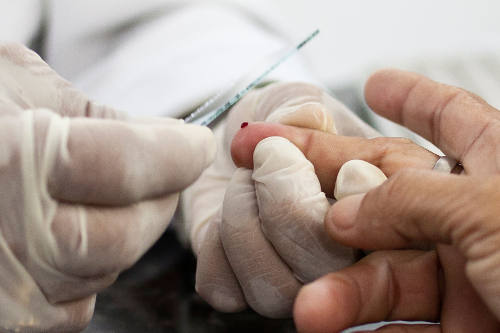From Architecture to AI-Powered Building Diagnostics: Tarek Rakha’s start-up story
10 June 2025
Published online 24 December 2017
Focusing malaria control on hindering its transmission could lead to less virulent infections.

© BrazilPhotos.com / Alamy Stock Photo
The team analysed 4,615 genes belonging to the parasite Plasmodium falciparum — the deadliest malaria-causing parasite in humans — taken from blood samples of infected, non-immune children in areas of East Africa with varying transmission rates. The parasites taken from the children’s blood were at various stages of their life cycle1.
The researchers found significant differences in gene expression in the malaria parasite based on its level of transmission in a certain area.
When a mosquito transmits the parasite to humans, it undergoes a process of replication in liver and red blood cells. Red blood cells infected with multiplying parasites rupture, releasing them into the blood stream to re-infect more cells. The rupture of red blood cells is what leads to the symptoms of malaria, including fever, sweating, chills, muscle pain and vomiting.
Some parasites remain inside red blood cells and produce gametocytes, the male and female versions of the malaria parasite, which are then picked up by mosquitoes and go on to reproduce sexually inside their insect host.
The researchers found that malaria parasites present in low-transmission areas adapt to improve their transmission by investing more of their energy in producing gametocytes and less of their energy in the multiplying phase of their life cycle that causes disease symptoms.
Conversely, in high transmission areas, the parasites invest more in asexual multiplication within the red blood cells of their human hosts: that part of the life cycle that causes the symptoms of disease within the human host.
At the gene level, in low transmission areas there was increased expression in the parasites of a gene that codes for a protein called AP2-G, which is responsible for initiating the production of gametocytes in red blood cells. There was also decreased expression of a gene coding for the protein HDAC1 and increased expression of a gene coding for the protein HDA1, which regulate multiplication of the parasite and the production of gametocytes, respectively.
“When mosquitoes are few, or immunity is not limiting multiplication, the parasite can afford to and will benefit from putting more into transmission,” says population biologist Margaret Mackinnon, the senior author of the study.
She explains: “When mosquitoes are plentiful, or immunity is holding it back, the parasite will benefit more from investing in multiplication. We therefore expect that malaria control programmes that cut into transmission intensity, for example with mosquito control or bed nets, will select for parasites that invest more in transmission and multiply less fast early on in the infection. We expect this to lead to less virulent infections.”
Malaria control programmes that directly target transmission are thus likely to be more sustainable in the long term than those that target asexual replication. Also, knowledge of the molecules that dictate how the parasite adapts to its natural environment could lead to the development of new strategies for malaria elimination, the researchers conclude.
doi:10.1038/nmiddleeast.2017.176
Stay connected: